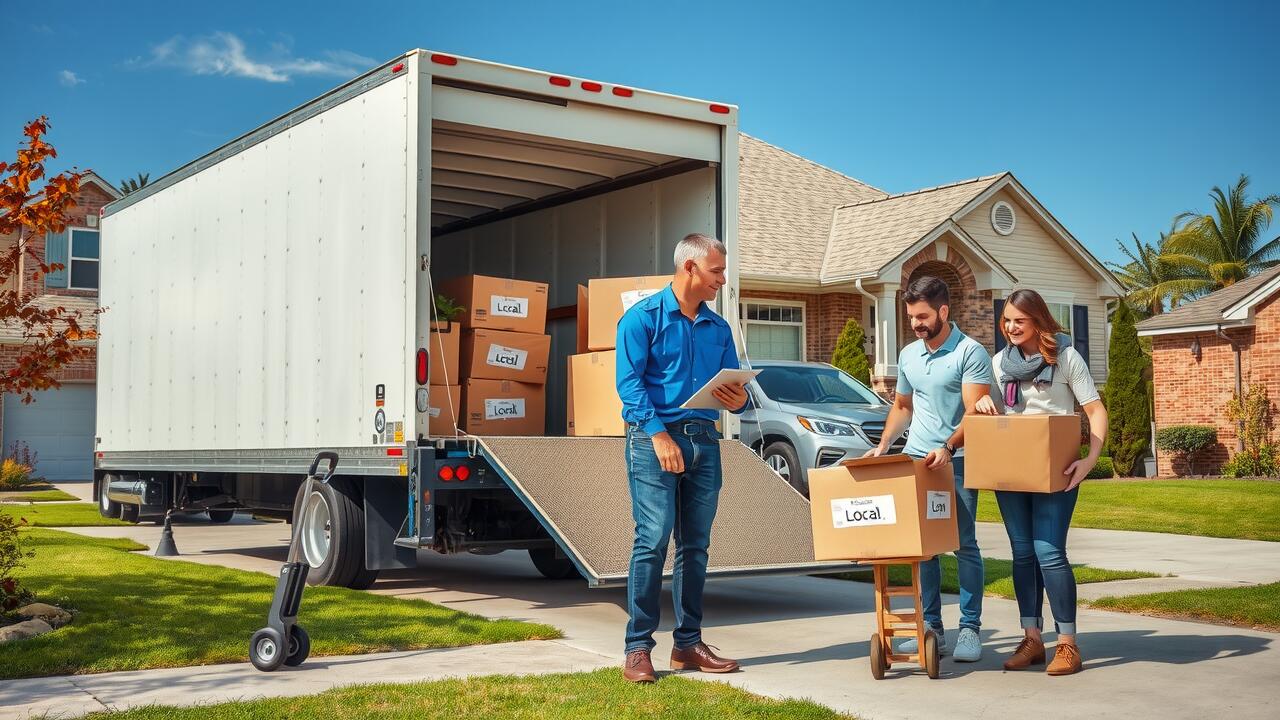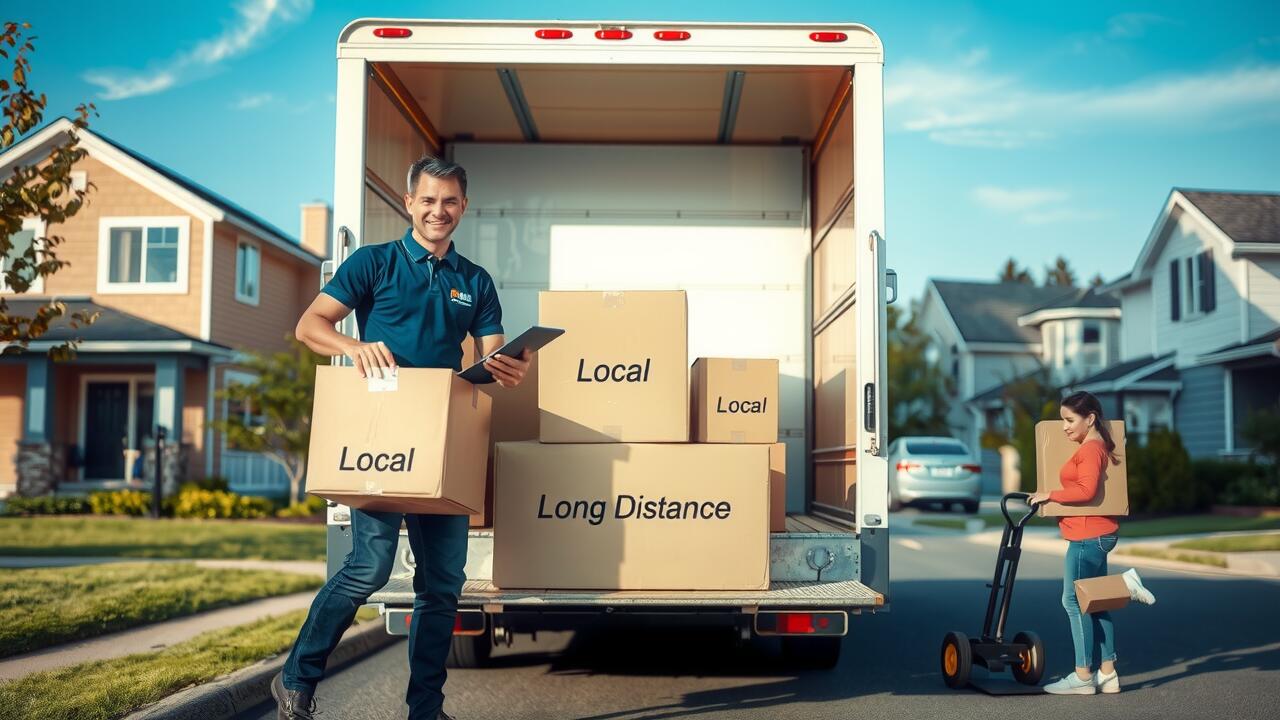
Table Of Contents
Transportation Options for Local Travel
When it comes to local travel, residents of Buckeye, Arizona, have several transportation options at their disposal. Biking and walking are popular choices for short distances, especially given the city's pleasant climate and many parks. Public transit is also available, providing an efficient way to navigate various neighborhoods without the need for a personal vehicle. This mix of options encourages sustainable travel and supports a more active lifestyle.
For those considering a move, understanding the differences in local transportation can be helpful. Local and Long Distance Moving in Buckeye, Arizona, often takes into account the convenience of nearby amenities and the accessibility of public transit routes. Short trips may primarily involve personal vehicles or bicycles, while long-distance moves demand more planning regarding logistics and transportation methods. Each option caters to different needs, allowing residents to choose what suits their lifestyle best.
Biking, Walking, and Public Transit
Biking and walking offer eco-friendly alternatives for local travel, encouraging healthier lifestyles while minimizing carbon footprints. Many urban areas have developed extensive bike lanes and pedestrian pathways, making it safer and more convenient for residents to choose these modes of transportation. Public transit systems, including buses and light rail, further enhance local travel by providing reliable and efficient options for daily commutes or leisure activities.
In Buckeye, Arizona, these transportation methods play a significant role in promoting community engagement and reducing traffic congestion. By utilizing local resources such as bike-sharing programs and accessible public transit, residents can navigate their neighborhoods and nearby areas with ease. For those considering a change in residence, understanding the nuances of local and long-distance moving in Buckeye can help streamline the transition from one place to another.
Local Travel Policies and Guidelines
Local travel policies are essential for managing transportation within communities. These guidelines help ensure that residents can travel safely and efficiently, whether by foot, bike, or public transport. Various local government agencies often establish regulations that dictate speed limits, pedestrian rights of way, and designated bike lanes. Such measures contribute to a harmonious balance between different modes of transportation, encouraging healthier lifestyles and minimizing environmental impacts.
When considering local travel in areas like Buckeye, Arizona, it’s also crucial to understand the relationship between local and long-distance moving. Local and long distance moving in Buckeye, Arizona, may involve different sets of regulations and service providers. Local moves are typically more streamlined due to shorter distances and simpler logistics. In contrast, long-distance moves require more extensive planning, often involving additional permits and interstate regulations. Understanding these differences helps residents prepare for their travel needs effectively.
Regulatory Standards and Recommendations
Regulatory standards for local travel vary by state and municipality, often focusing on ensuring safe and reliable transportation options for residents. In Buckeye, Arizona, guidelines are established to accommodate a range of transportation modes, including biking, walking, and public transit systems. These recommendations aim to promote accessibility for everyone, ensuring that local travel remains efficient and user-friendly. Authorities may also issue specific rules governing the operation of ride-sharing services, electric scooters, and other emerging transportation technologies to enhance the local travel experience.
Long-distance travel typically involves different regulatory considerations, especially regarding vehicle safety and emissions. Local and Long Distance Moving in Buckeye, Arizona, may follow distinct sets of guidelines influenced by state and federal regulations. Residents planning moves or travel should familiarize themselves with these rules to ensure compliance. Factors such as weight limits, permits for oversized vehicles, and road usage fees can vary significantly, impacting the overall planning and execution of both local and long-distance travel.
Local Travel vs. Long-Distance Travel
Local travel typically refers to shorter distances, often encompassing areas within a city or neighborhood. Residents may find themselves commuting to work, running errands, or visiting friends and family within this small radius. The focus is often on convenience and accessibility, with transportation options designed to facilitate quick trips. For many, this means using personal vehicles, bikes, or public transit to move about their daily routines.
In contrast, long-distance travel involves journeys that span greater distances, often requiring more planning and consideration. This type of travel can include moving homes or engaging in road trips that connect different cities or regions. When considering Local and Long Distance Moving in Buckeye, Arizona, it’s important to account for logistical factors such as time, cost, and the available resources. These distinctions help inform the most effective methods for navigating travel, whether on a short-term or long-term scale.
Key Differences and Considerations
Local travel typically involves distances that can be covered in a relatively short time, often within a city or suburban area. This type of travel allows for more flexible modes of transportation, such as biking, walking, and using public transit. In contrast, long-distance travel usually entails significant mileage that often requires more planning and the use of vehicles designed for comfort and efficiency over longer durations. Individuals engaged in local travel often benefit from quicker access to destinations, while long-distance travel poses logistical challenges like fuel costs and time spent on the road.
When considering options like Local and Long Distance Moving in Buckeye, Arizona, one must account for the specific needs and preferences tied to each mode of travel. Factors such as convenience, cost, and environmental impact may heavily influence decisions. While local moving can often leverage existing resources efficiently and with less disruption, long-distance moving necessitates careful coordination and often higher expenses due to distance and travel time. Understanding these differences can help individuals make informed choices about their travel plans.
FAQS
How many miles is typically considered local travel?
Local travel is generally considered to be within a range of 1 to 50 miles from your starting point, depending on the context and community standards.
What transportation options are available for local travel?
Common transportation options for local travel include biking, walking, public transit, and personal vehicles.
Are there specific policies regarding local travel?
Yes, many municipalities have local travel policies that outline guidelines for transportation, safety, and environmental impacts within community boundaries.
How does local travel differ from long-distance travel?
Local travel typically involves shorter distances and may utilize different transportation options, whereas long-distance travel usually covers greater distances and may involve more planning and resources.
What are some key considerations for local travel?
Key considerations for local travel include the mode of transportation, travel time, safety regulations, and environmental impact. It's important to evaluate these factors based on your specific needs and location.
